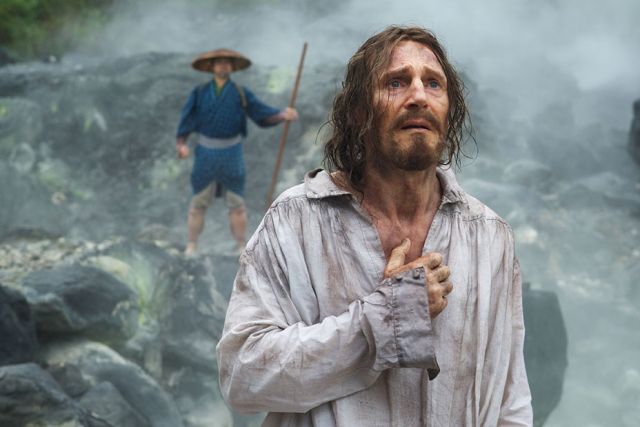
Silence
By Martin Scorsese
Starring Andrew Garfield, Adam Driver, Liam Neeson
Silence is what is known as a “passion project” for Martin Scorsese. He grabbed the rights to Japanese writer Shusaku Endo’s novel as soon as he read it and spent about a quarter of a century agonising over the script and production.
Scorsese reputedly worked without payment to keep the film within its US$40 million budget and the stars similarly took cut rates.
It is set in the 1600s when Portuguese merchant capital was reaching Japan. Successful Catholic missionary activity resulted in the Shimabara Rebellion.
The alarmed Japanese feudal lords violently repressed Christianity in defence of their power and wealth. They enforced adherence to the Japanese variety of Buddhism.
It is a film of ideas, examining the meaning of mercy and compassion, and the personal cost of betrayal. It is also visually stunning. The cinematography has been nominated for an Academy Award and rightfully so.
It poses fascinating theological questions, their historical bases and the comparison between their Christian and Buddhist understandings. With so much going for it, why does Silence fail?
In part, it is Scorsese’s annoying lack of courage in having his Portuguese priests speaking English in fake Latino accents. Liam Neeson — playing an absolutely crucial role — not only fails to make his accent credible, he imitates a block of wood.
A key plot element is the fact that underground Christians could identify themselves to strangers by their ability to speak snatches of Portuguese. When speaking Japanese, their dialogue is sub-titled. Scorsese could easily have cast Portuguese actors in the appropriate roles and sub-titled the lot.
The supporting cast of Japanese actors shines in comparison to the European stars.
The central question of Silence is God’s apparent absence during periods of human suffering. Not only is this not adequately communicated, but other questions are not pursued.
What was it about the image of the crucified Jesus that inspired the oppressed Japanese peasantry to not only rebel, but to maintain their faith underground in the face of extreme torture? That question echoes down the centuries to the Liberation Theologians today, but Scorsese doesn’t register it.
The film’s explanation, when it comes, of why Christianity was having a hard time in Japan is ridiculous.
The Japanese nobility, in its ruling class fury, hypocritically ordained the Buddhist teaching of compassion as its ruling ethos – and enforced it with torture. What if Scorsese had compared and contrasted the Christian treatment of European Jews at that time?
And failing to illuminate the class impacts of mercantile intrusion of European capital into Asia undercuts the reason why the conflict at the film’s heart occurred.
Scorsese says that the film is about “faith and doubt, weakness, and the human condition”, which is all very worthy. Unfortunately, Silence is not worth seeing.
Like the article? Subscribe to Green Left now! You can also like us on Facebook and follow us on Twitter.